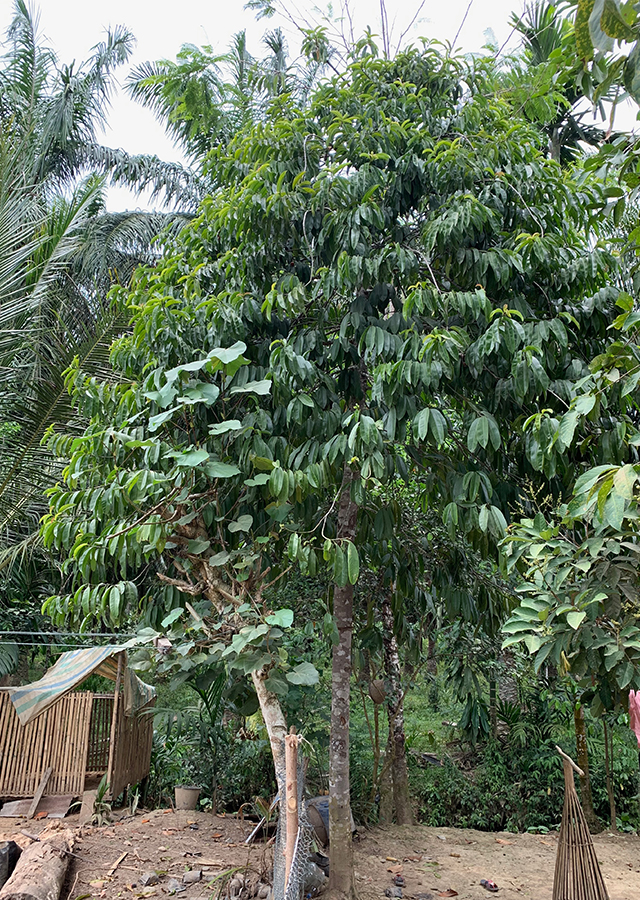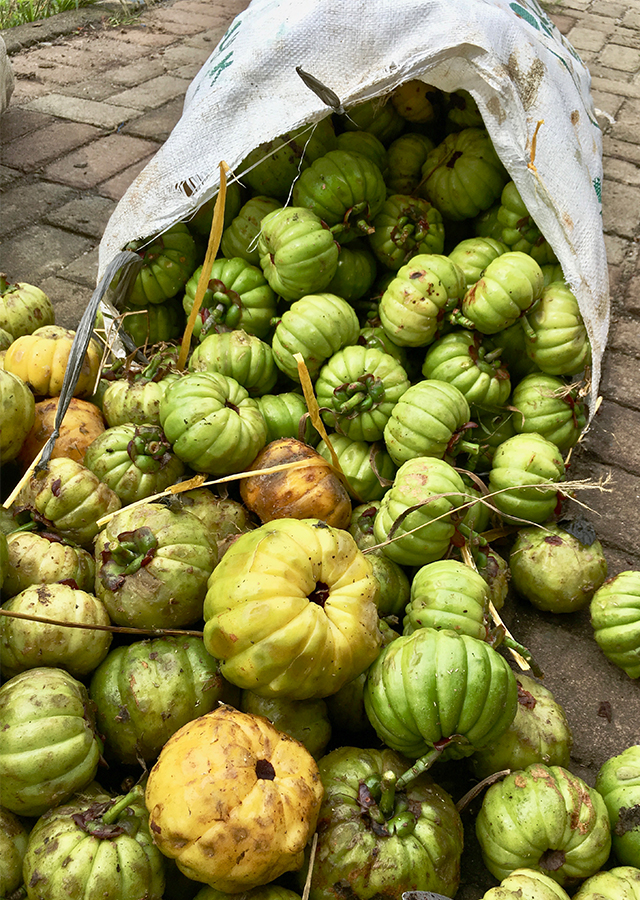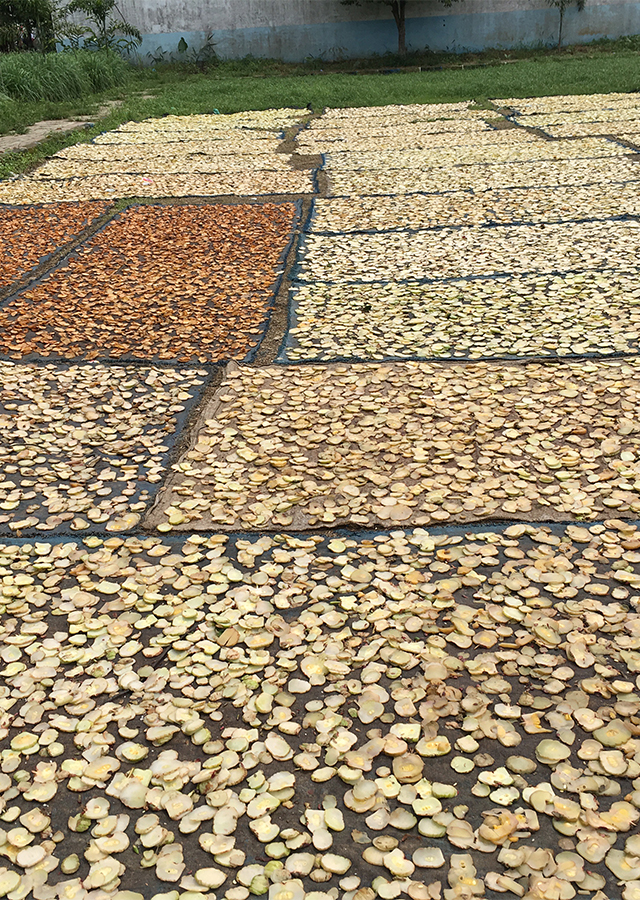Garcinia
Garcinia atroviridis Griff. ex T.Anderson.
Clusiaceae
Location in our garden
Orchard



Synonym
Habitus
Trees. Medium-sized, perennial tree growing up to 27 m with 70 cm girth and a long trunk
Part Used
Leaves
Fruit
Roots
Growing Requirements
High Rainfall
Habitat
Forest
Overview
The tree is native to Peninsular Malaysia, Thailand, Myanmar and India (Assam). In South-East Asia, especially Thailand, the tree is a popular herbal treatment, and is also occasionally cultivated in gardens and semi-cultivated for its edible fruit in the surrounding forest. The products of asam garcinia, such as tea, capsules, and fruit slices, are currently becoming popular as a health food.
Vernacular Names
Assam gelugor, Asam keping, Asam gelugo (Malaysia), Som - khaek, Som-khaai, A sa ka lu ko (Thai).
Agroecology
A tropical species that occurs in the warm, mixed lowland forest on the plains as individual trees and up to 600 m in the highland areas with high rainfall in South-East Asia. Garcinia species, mainly in the tropical tropics of South-East Asia, are second-storey forest trees, adapted to shade.
Morphology
- Barks - smooth to rough, pale grey to black with transparent yellow latex.
- Leaves - dark green, coriaceous, oblong-lanceolate tapering to base and tip abruptly acuminate, 15 × 4 cm – 25 × 7 cm, on 15–25 mm long petioles, pinkish red when young and glossy dark green when mature.
- Flowers - terminal at the end of twigs, pedicellate, with 4 yellow, spreading orbicular, concave sepals, 4 crimson, obovate, fleshy petals.
- Fruits - green turning to bright yellow when ripe, depressed globose, 6–10 cm diameter with broadly sunken concave apex, with 12–16 ribs and shallow grooves giving it a fluted form with persistent petals and sepals and a thick rind.
Cultivation
By seeds - seeds of most members of the genus can germinate slowly, even if freshly sown, sometimes lasting 6 months or more. Plants of the desired sex can be produced by grafting or inarching bud wood of recognized sex on seedling trees that can bear fruit within 4-5 years of grafting.
Chemical Constituents
Citric acid, mallat acid, tartaric acid, ascorbic acid, flavonoids, phenolic, tannins, palmitoleic acid, palmitic acid, β-fernesene, β-caryophyllene.
Traditional Medicinal Uses
Medicinal Uses
- The dried fruit is used as an expectorant, cough therapy, and as a laxative. Also used for improving blood circulation.
- It is believed that by reducing blood cholesterol levels and enlarging the blood vessels, absorbing excess fat, etc., the fruit extract will promote good health. In South-East Asia, it is widely used in diets.
- Plant parts have the potential of antioxidant, antimicrobial/ antifungal, antiobesity, and antiinflammatory.
Traditional Uses
- In South-East Asia, for the treatment of dandruff, earache, stomach pain associated with pregnancy, and throat irritation, a decoction of G. atroviridis leaves and roots is often used.
- G. atroviridis dried fruit is used as an expectorant to treat cough, to improve blood circulation, as a laxative.
- After isolation, the fruit is often used in a lotion with vinegar to spread over women's abdomen.


